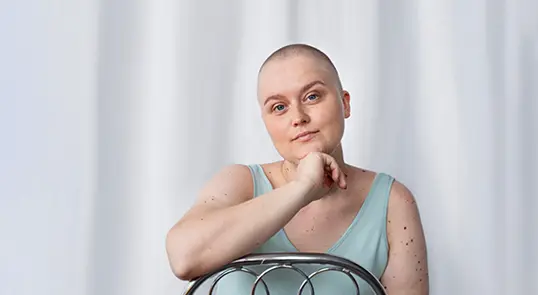
Remission that’s within reach
99% of people with B-cell ALL achieved complete remission after being treated with a chemotherapy regimen that included ONCASPAR

Pegaspargase (ONCASPAR) is included in first-line ALL treatment regimens recommended by the National Comprehensive Cancer Network® (NCCN®).*,† Since being introduced in 1994, it has helped many thousands of people with ALL and has given families hope for a future they can look forward to.
*Referenced with permission from the NCCN Clinical Practice Guidelines in Oncology (NCCN Guidelines®) for Acute Lymphoblastic Leukemia V.1.2022. © National Comprehensive Cancer Network, Inc. 2022. All rights reserved. Accessed April 10, 2023. To view the most recent and complete version of the guideline, go online to NCCN.org. NCCN makes no warranties of any kind whatsoever regarding their content, use or application and disclaims any responsibility for their application or use in any way.
†Referenced with permission from the NCCN Clinical Practice Guidelines in Oncology (NCCN Guidelines®) for Pediatric Acute Lymphoblastic Leukemia V.2.2023. © National Comprehensive Cancer Network, Inc. 2023. All rights reserved. Accessed April 3, 2023. To view the most recent and complete version of the guideline, go online to NCCN.org.
With ONCASPAR, living disease free is a real possibility
Minimal residual disease (MRD) means that a small number of cancer cells are still present in the bone marrow after ALL has been treated. Even if a patient is in remission, there is a possibility that ALL might come back if treatment is discontinued. That’s why it is important for patients to remain on the treatment outlined by their healthcare professional.
MRD negativity means that no cancer cells were found after using sensitive tests. Sensitive tests that look for MRD can detect even 1 cancer cell out of 10,000-1,000,000 cells in the bone marrow. Many patients who have been treated with ONCASPAR-containing regimens have reached MRD negativity, making them disease free.
In Dana-Farber Cancer Institute study 11-001, 87.9% of patients treated with ONCASPAR as part of a multicomponent chemotherapy regimen were MRD negative by the end of the induction phase (first phase) of the treatment.
MRD Negative
87.9% of patients treated with ONCASPAR achieved MRD negativity by the end of induction.
All preferred regimens for frontline therapy for AYA patients with Ph-negative ALL in the NCCN Clinical Practice Guidelines in Oncology (NCCN Guidelines®) contain pegaspargase (ONCASPAR).
Read about ONCASPAR’s well-established safety profile
